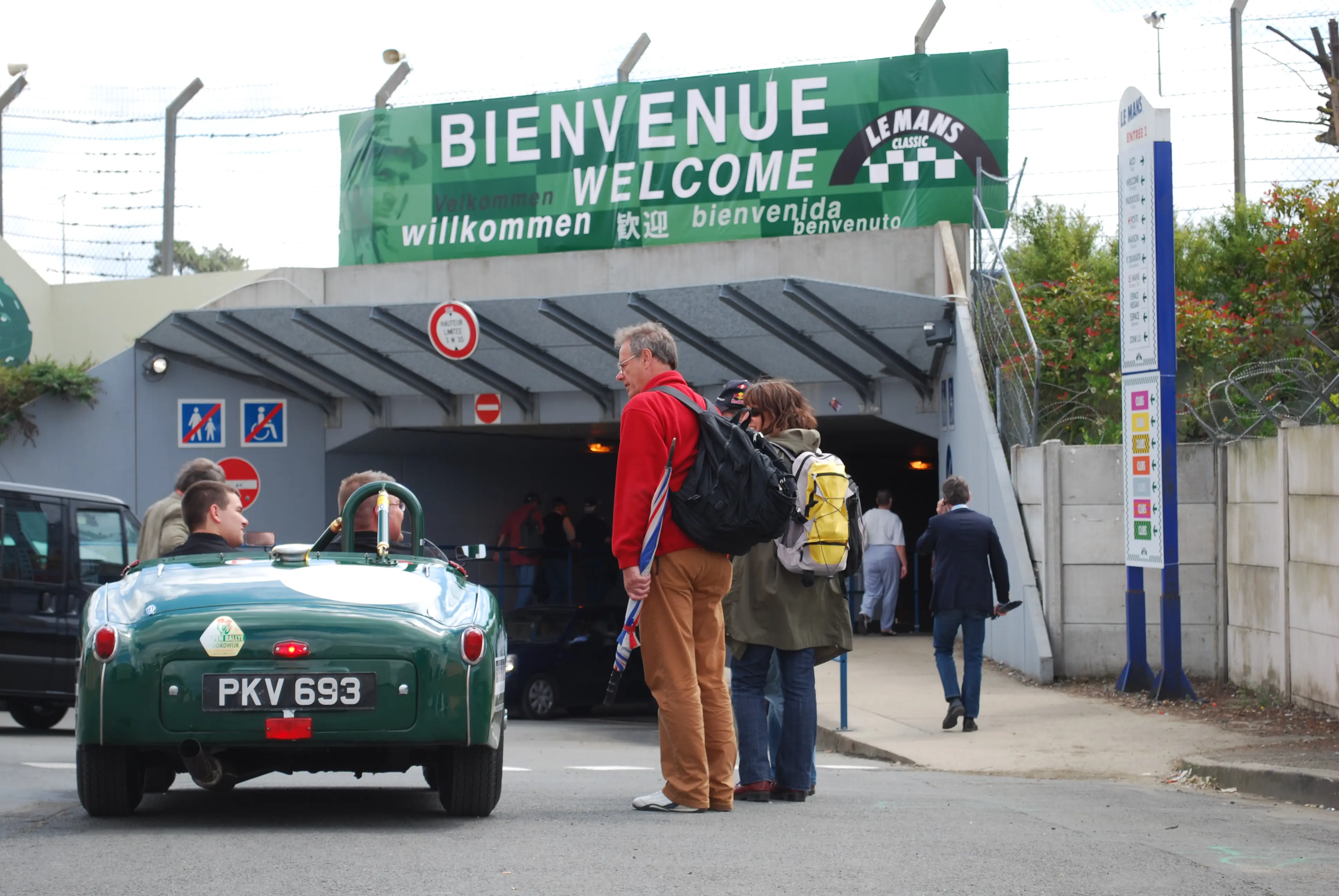How to holiday abroad in France with your classic
28 April 2023
Driving your historic vehicle in France is something all classic car owners should experience – whether it’s to savour the delights of the bi-annual Le Mans Classic, the riviera or one of the hundreds of enchanting villages, cities and vistas available to holiday-makers across The Channel.
Rising pollution levels have, however, brought in new restrictions of which you should be aware.
Jonathan Kimber is Technical Advisor to the MG Owners’ Club (MGOC), the largest single marque car club in the world. Lancaster Insurance Services approached him at the Practical Classics Classic Car and Restoration Show 2023 in March for advice.

What requirements have stayed the same?
Basics first. Jonathan said: “A good set of maps, plan your route, and take a decent toolkit,” Jonathan advised. “Take a mobile phone, too, and make sure you have decent breakdown cover [Lancaster Insurance, and other providers, can help with this]. Headlight deflectors, hi-vis jackets (you have to be able to get to those without getting out of the car) and a warning triangle.”
It’s also advisable to carry a first aid kit, with Jonathan adding that disposable breathalysers are also a good thing to carry in case you’re stopped. Be aware that radar detectors are illegal, with heavy fines on their use.
French police ask that you take your MoT, registration document and driving licence paperwork, although the MGOC understands that photocopies of the former two are said to be acceptable.
What’s changed, then?
Post Brexit, there appears to be a limit on how many spare parts you can take with you without having to declare every item to customs.
The MGOC is currently investigating the matter with French authorities, but understands that limiting the spares you carry is preferable to travelling over with every part that you might need.
“You want as much boot space as possible anyway, you’re going on holiday”, Jonathan said.
He added: “Take small, key parts so you can be self-sufficient to a degree: wires, fuel pipe, fuel additives, things that could let you down that are very easy to fix, but not if you don’t have the bits. Anything bigger, use the local contact.
“Advice is continually changing. We’re hearing classic racers are having to list everything they took out with them. Some people are saying you need to declare spares, others are saying you don’t.
For its members, the MGOC can supply a list of trusted local suppliers for spares and repair work nearest to the area you’re visiting; contact your affiliated club for details.”
Jonathan continued: “It’s always the bits that are specific to the car, like in France, a lot of cars are front-wheel-drive, so if you need a propshaft universal joint, you’re unlikely to find one. It’s particular parts you need to pinpoint, but if ideally you’re servicing the car before you travel, things aren’t as likely to go wrong.
“I would look at relying on reasonably local suppliers. Gone are the days where you can ring the spares department and have, say a fuel pump for an MGB in 24 or 48 hours.
“Nowadays, you look at a supplier in Europe who could get you one. The MGOC could, for example, supply a list of garages that could get specific parts to you in that short amount of time.”
Aside from our conversation with Jonathan, we also wanted to highlight the French clean air zones, or Zones à Faibles Émissions - ZFE)
ZFEs shouldn’t be a problem for any classic aged over 30 years as per the definition of a historic vehicle by FIVA – but in certain areas, their enforcement is under review.
ZFEs are more numerous in France than they are in the UK; tasked with lowering pollution levels, ZFEs are running Paris, Lyon, Aix Marseille, Strasbourg, Toulouse, Nice, Montpellier, Grenoble, Reims, Rouen and Saint-Étienne. More are to be decided by 2025.
Paris runs the most concerning ZFE, despite negotiations by the French equivalent of the FBHVC, the FFVE. It arranged for cars aged 30 and over to be made exempt from ZFE fines and requirements in Paris, Rouen, Reims, and Nice.
However, as Connexion France discovered, there’s currently no way to show formally that a foreign registered classic is emissions zone exempt in Paris, the system, known as Crit’Air, won’t issue documentation equivalent to that of the ‘véhicule de collection carte grise’ for classics registered outside France.
The Connexion’s Emma Morgan stated: “It is not currently possible to buy a Crit’Air sticker for a classic car because they are too old to fit the criteria.
“At present, checks do not seem consistent and would, if you are unlucky, be handed out in person by a police officer or gendarme, who may well use their discretion if the car is obviously a historic vehicle.
“However, drivers will soon need some sort of sticker because cameras capable of checking Crit’Air stickers are to be installed from next year and they will not distinguish classic cars from other vehicles which should be carrying a sticker.”
For stress-free travel in and out of French ZFEs – and indeed any low emissions zone in Europe, including the UK, Jonathan recommended downloading a mobile phone app called Green-Zones, updated in real-time, it lets you know of restricted areas and the requirements for entry.
